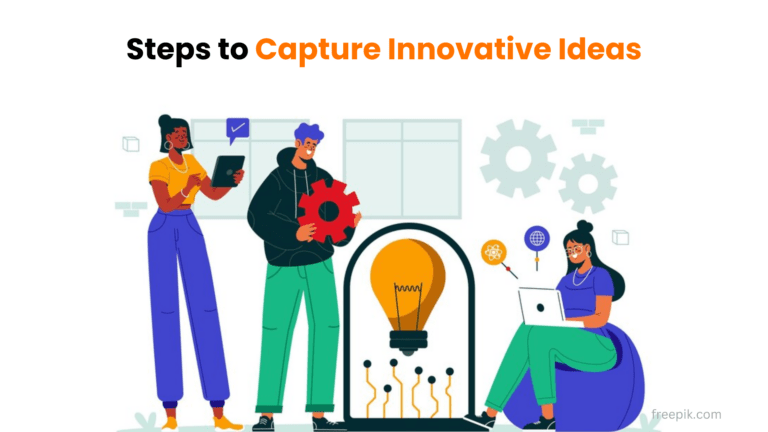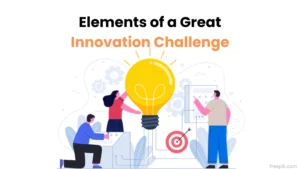BFrom being mocked locally as ‘Damn Bloody Slow’ to being crowned “Bank of the Year,” Singapore’s DBS Bank has undergone a remarkable transformation.
But how did they achieve this feat?
The secret lies in fostering an environment where innovation thrives across the entire organization, enabling the capture of innovative ideas and their seamless implementation.
Under the visionary leadership of CEO Piyush Gupta, DBS embraced disruptive innovation as a core principle, ultimately earning the title of the best bank in the world.
And, by 2019, DBS became the first bank to simultaneously hold the titles of “Bank of the Year” (The Banker), “Best Bank in the World” (Global Finance), and “World’s Best Bank” (Euromoney)—a testament to its extraordinary journey of innovation.
Central to this transformation was a culture of experimentation and collaboration.
The bank regularly conducted hackathons, bringing together diverse teams of 8-10 employees, blending youthful creativity with seasoned experience.
Given just 72 hours, along with unconventional employee engagement activities like ping pong tables, free-flowing beer, and even mattresses for power naps, these teams were tasked with developing innovative applications.
At the end of three days, the most promising ideas were judged, refined, and implemented.
Today, DBS stands as a beacon of how enterprise-wide participation in innovation can propel an organization from being a local joke to a global leader.
This begs us to find out the way to be innovative.
Why Capture Innovative Ideas?
According to McKinsey, 80% of executives believe their current business models are at risk of disruption, yet they struggle to capture the innovative ideas that could secure their future.
Moreover, 84% of executives recognize that innovation is critical to their organization’s growth and long-term success.
A powerful example of the importance of capturing ideas comes from 3M.
In the 1970s, a 3M scientist named Spencer Silver accidentally created a low-tack adhesive. While the adhesive seemed insignificant, another employee, Art Fry, recognized its potential for creating sticky notes that wouldn’t damage paper.
By capturing and nurturing this idea, 3M transformed a simple concept into the globally successful Post-it Notes, a product that generates billions in revenue annually.
To sum it up, capturing innovative ideas is essential for several reasons:
- Staying Ahead of Disruption: As markets and technologies shift, the ability to harness fresh ideas can help organizations pivot and adapt. Businesses that actively seek and capture innovation are better equipped to navigate change and seize new opportunities.
- Driving Growth: Innovation is a proven driver of growth. Companies that cultivate and implement new ideas tend to outperform their competitors in revenue, market share, and customer satisfaction. Capturing these innovative ideas and solutions ensures a steady pipeline of innovation that fuels business expansion.
- Engaging Employees: By encouraging employees to contribute their ideas, companies create a culture of inclusion and engagement. Employees who feel their input is valued are more motivated and committed to the organization’s success, leading to higher productivity and retention rates.
Related Read: Employee Engagement: Answering All Your Questions
Capturing innovative ideas isn’t just about staying relevant in a competitive market; it’s about unlocking the full potential of your organization.
Encouraging innovation can be complex for business leaders when motivating employees to develop new and creative ways to solve problems.
Typically, these ideas are not born within the corporate boardrooms, but instead, the dedicated workers find them by identifying problems and providing ingenious solutions.
Let’s discuss further!
Challenges in capturing innovative ideas:
Frontline employees often encounter the real challenges and pain points within an organization.
These individuals can be uniquely positioned to develop ingenious solutions that could drive significant innovation to specific challenges.
However, without an efficient system for capturing these ideas, enterprises risk losing valuable opportunities. In the absence of frictionless idea-capturing mechanisms, these potentially game-changing insights can vanish before they are even documented.
The Pitfalls of Inefficient Idea-Capturing Methods
Many organizations rely on outdated or makeshift systems to gather ideas, such as:
- Suggestion Boxes: Often overlooked and rarely revisited, these can lead to ideas being forgotten.
- Dedicated Email Addresses: While a step forward, this method often results in cluttered inboxes, making it hard to track and manage submissions.
- Slack Channels: While more modern, ideas can still get lost in the flow of daily conversations, and tracking them from inception to execution becomes a daunting task.
These methods introduce high friction, discouraging employee participation. Moreover, ideas often get lost in the shuffle, and without proper tracking, the journey from idea to implementation is fragmented at best.
Cultural Barriers to Innovation
Beyond the technical challenges, cultural barriers also play a significant role in hindering innovation.
A lack of a supportive environment can stifle creativity and discourage employees from contributing their ideas. Some common reasons for low participation include:
- Fear of Judgment: Employees may hesitate to share ideas, fearing negative feedback or rejection.
- Lack of Awareness: Employees might not understand the value their ideas could bring or how submitting them could benefit both the company and their careers.
Related Read: People WILL Steal Ideas Until Your Organization Starts Doing This
To foster a culture of innovation, it’s crucial to address these issues. Employees need to feel that their input is valued and that their ideas are not just heard but actively developed and implemented.
Building a Culture of Innovation
For innovation to thrive, organizations must create an environment where employees feel empowered to contribute. This involves:
- Implementing User-Friendly Idea-Capturing Systems: A frictionless platform that allows employees to easily submit, track, and develop their ideas is key to ensuring that valuable insights are captured and nurtured.
- Encouraging Open Communication: By promoting transparency and open dialogue, employees will be more likely to share their thoughts without fear of judgment.
- Recognizing and Rewarding Contributions: Acknowledging the impact of employee ideas and rewarding innovation fosters a sense of ownership and encourages ongoing participation.
Capturing innovative ideas is not just about having a system in place; it’s about building a culture that values and nurtures creativity.
By addressing the challenges and creating a supportive environment, organizations can unlock the full potential of their workforce, driving sustained innovation and growth.
Related Read: Top 7 Favorite Idea Management System Features of Innovation Leaders
Capture Creative Ideas in 10 Easy & Implementable Steps
Filling your innovation funnel requires a strategic approach, combining leadership engagement, cultural change, and practical processes.
Here’s a 10-step plan to help your organization consistently capture and implement innovative ideas.
Step 1: Encourage Leadership To Involve Proactively
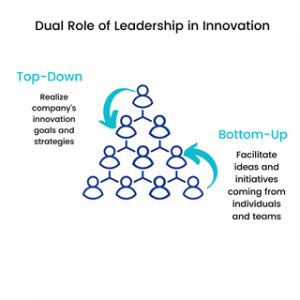
Leadership plays a dual role in fostering innovation—both top-down and bottom-up. Just as children learn by imitating their parents, employees take cues from their leaders.
When leadership actively engages in the innovation process, it sets a powerful example for the rest of the organization.
Top-Down
Take inspiration from modern leaders like Sundar Pichai, CEO of Alphabet Inc., who has emphasized “moonshot thinking” within Google.
This approach encourages employees to aim for ambitious goals that push the boundaries of technology and creativity.
By setting high but achievable innovation targets, Pichai has fostered a culture where groundbreaking ideas such as Google’s AI developments and sustainability projects thrive.
In 2024, research shows that companies with proactive leadership in innovation are 5 times more likely to achieve growth targets than those without.
According to a 2023 McKinsey report, organizations that integrate innovation deeply into their strategy outperform their peers by 20% in revenue growth.
These companies typically have leaders who set specific, challenging innovation goals, leading to a steady stream of high-impact ideas.
Bottom-Up
The way leadership interacts with new ideas is crucial. Look at how Microsoft’s CEO, Satya Nadella, transformed the company’s culture to embrace a growth mindset.
Nadella’s emphasis on empathy and learning from every failure has made Microsoft one of the world’s most innovative companies, with advancements in cloud computing, AI, and quantum computing.
Nadella’s approach echoes Steve Jobs’ respect for the creative process, as highlighted by Jony Ive, Apple’s former Chief Design Officer.
Jobs treated early-stage ideas with rare reverence, understanding that the creative process required a nurturing environment.
This respect for innovation at the grassroots level encourages employees to share ideas without fear of judgment, contributing to a richer pipeline of creative solutions.
In 2024, building such a dual approach—balancing structured innovation with an open, supportive environment—is more crucial than ever.
A recent study by Deloitte found that organizations with inclusive leadership are 2.3 times more likely to be innovation leaders in their industry.
This inclusivity, combined with clear innovation goals, ensures that creative thinking becomes deeply embedded in the organizational culture.
Step 2: Determine The Barriers
Before innovation can flourish, it’s essential to identify and address any barriers within your organization. These barriers often stem from cultural, structural, or resource-related issues that stifle creativity and hinder progress.
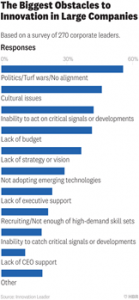
Source- Innovation Leader – HBR
Conduct Comprehensive Assessments
Start by conducting detailed surveys and facilitating open discussions with employees at all levels.
Leveraging AI-driven sentiment analysis tools can provide deeper insights into employee perceptions and attitudes toward innovation.
For example, tools like Culture Amp or Peakon now offer real-time analytics that help identify innovation bottlenecks by analyzing feedback patterns across different departments.
According to a 2023 PwC report, 72% of companies that regularly assess and address innovation barriers see a significant improvement in their innovation output.
Identifying obstacles early allows organizations to make necessary adjustments and foster an environment conducive to innovation.
Common Barriers to Innovation
- Lack of Time: In many organizations, employees are often bogged down with routine tasks, leaving little room for creative thinking.
- Perception That Innovation Doesn’t Yield Positive Outcomes: This perception is a significant barrier. A 2023 Deloitte survey found that 60% of employees in organizations that struggled with innovation believed that their ideas would not be implemented. To counter this, transparency in the innovation process is key—showing how ideas are evaluated and implemented can shift this mindset.
- Insufficient Financial Resources: While budget constraints can be a genuine concern, innovative thinking often requires smart allocation rather than extensive resources. Companies like Tesla have thrived by focusing their limited resources on high-impact areas, driving breakthrough innovations in electric vehicles and renewable energy.
- Lack of Innovative Skills: In 2024, upskilling and reskilling have become paramount. A World Economic Forum report projects that by 2025, 50% of all employees will need reskilling. Companies should invest in training programs that enhance creative problem-solving and innovative thinking across all levels of the organization. Platforms like Coursera and LinkedIn Learning now offer tailored courses on innovation management and design thinking.
- Inadequate Infrastructure for Developing New Ideas: Without the right tools and processes, even the best ideas can falter. Modern innovation platforms like InspireIP offer integrated solutions that streamline the ideation process, from capturing ideas to evaluating and implementing them. These tools reduce friction and ensure that good ideas don’t get lost in the shuffle.
Shifting from Status Quo to Innovation Mode
Once barriers are identified, the next step is to address them systematically. For example, Google’s Project Aristotle revealed that psychological safety is a key factor in fostering innovation.
Creating a safe space where employees feel comfortable sharing their ideas can significantly enhance innovation outcomes.
By proactively identifying and addressing these barriers, organizations can shift gears from maintaining the status quo to embracing a culture of continuous innovation.
Companies that prioritize this shift are 3 times more likely to achieve their innovation goals, according to a recent McKinsey study.
Step 3: Use Merit v. Money As a Motivator
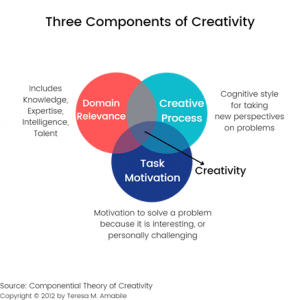
While financial compensation remains a crucial aspect of employee satisfaction, it is not the primary driver of innovation.
In fact, research has consistently shown that intrinsic motivators—such as intrapreneurial spirit, autonomy, mastery, and purpose—play a far more significant role in fostering creativity and innovation within an organization.
Crafting and Communicating Clear Goals
Clarity in organizational goals is essential for guiding innovative efforts.
When employees understand the organization’s mission and how their contributions align with it, they are more motivated to think creatively and innovate.
For example, Salesforce has implemented a company-wide initiative known as V2MOM to ensure every employee understands the company’s vision and their role in achieving it. This clarity has been instrumental in driving continuous innovation across the organization.
Recognizing and Rewarding Contributions
Recognition plays a pivotal role in sustaining innovation.
Acknowledging the efforts and achievements of employees, regardless of the size of their contributions, is vital for maintaining a culture of innovation.
Modern recognition platforms like Idea Assist offer innovative ways to acknowledge employees, allowing peers and leaders alike to recognize contributions instantly.
This recognition can range from public praise to rewards that align with the individual’s preferences, further enhancing motivation and participation in the innovation process.
For instance, Google’s “Peer Bonus” program allows employees to nominate their peers for bonuses based on their contributions, fostering a collaborative and innovation-friendly culture.
Balancing Merit and Financial Incentives
While merit should be the primary motivator, financial incentives can still play a supportive role.
The key is to ensure that monetary rewards are tied to innovative achievements rather than being the sole focus. This approach helps to reinforce the value of creativity and the importance of contributing to the organization’s long-term goals.
This balance ensures that employees feel valued for their creative contributions while still being rewarded for their efforts.
Step 4: Establish A Process To Capture Innovative Ideas
“Ideas tend to vanish quickly. So capture them before they get lost.”
Ideas can vanish quickly if not documented in time. It’s crucial to have a well-defined process for capturing and developing ideas. This includes:
- Asking for Ideas: Encourage employees to submit their ideas, and communicate specific areas of focus to guide innovation.
- Vetting Ideas: Establish a team to evaluate ideas based on feasibility, business suitability, technology, and other criteria.
- Providing Feedback: Keep employees updated on the status of their ideas, and recognize and reward successful contributions.
Step 5: Minimize Friction Between Participants
In the modern workplace, where collaboration and communication are key to driving innovation, it’s crucial to minimize any friction that might hinder the flow of ideas across the organization.
To capture enterprise-wide innovations effectively, providing employees with the right tools, systems, and support is essential.
Intuitive and Accessible Tools
The tools you provide for idea capture and collaboration need to be user-friendly, intuitive, and accessible to all employees, regardless of their technical expertise.
A survey by Gartner in 2023 found that 63% of employees are more likely to participate in innovation initiatives if the tools provided are easy to use and integrate seamlessly with their daily workflows.
Related Read: Top 7 Favorite Idea Management System Features of Innovation Leaders
The key is to ensure that these platforms are accessible from various devices, including mobile, so that employees can contribute ideas anytime, anywhere.
Ensuring Comfort and Inclusivity
Friction is not only technical; it can also be psychological.
Employees need to feel comfortable sharing their ideas without fear of judgment, retribution, or idea theft.
By creating a psychologically safe environment where employees know their ideas will be respected and considered is paramount, innovation leaders win.
Encourage open communication and foster a culture where diverse perspectives are welcomed.
Utilizing AI and Automation to Reduce Bottlenecks
AI and automation are playing a significant role in reducing friction within the innovation process.
In 2024, more organizations are leveraging AI-driven tools to streamline idea submission, evaluation, and feedback. These tools can automatically categorize and prioritize ideas based on predefined criteria, reducing the manual effort required from employees and speeding up the entire process.
Ensuring Cross-Departmental Collaboration
Innovation often requires collaboration across different departments, but siloed structures can create significant friction. To minimize this, it’s important to establish processes and platforms that facilitate cross-departmental collaboration.
Using collaboration platforms that allow for real-time communication, shared workspaces, and joint project management can break down these silos.
The InspireIP platform offers features that enable cross-functional teams to work together on innovation projects, ensuring that ideas are developed with input from various perspectives.
Regular Feedback and Continuous Improvement
Finally, gathering feedback on the innovation process itself is essential.
Regularly assess the tools, systems, and processes in place to identify any areas of friction and make necessary adjustments. This continuous improvement approach ensures that your innovation process remains efficient and that employees remain engaged and motivated to contribute.
Learn more here or send us a mail at [email protected] and we can walk you through our tool.
Step 6: Make Innovation A Priority
Organizations like Google, 3M, and Atlassian have all implemented systems to make innovation a priority. For example:
- Google’s 20% Project System: This allows employees to spend 20% of their time on innovative projects, leading to the creation of services like Gmail.
- 3M’s 15% Project: Employees are encouraged to dedicate 15% of their time to developing new inventions, resulting in products like Post-it Notes.
- Atlassian’s Ship It Day: Employees are challenged to ship new products within 24 hours, fostering a culture of rapid innovation.
Encourage open forums and group discussions to further prioritize innovation and keep creative ideas flowing.
Step 7: Think Different
Sometimes, persistent business problems require a paradigm shift. Take Amazon Web Services (AWS) as an example. AWS’s success wasn’t due to a single brilliant idea, but rather a collaborative effort to address the need for faster technology deployment. By thinking creatively and working together, your team can develop innovative solutions to complex challenges.
Ideas are fragile.
It is important to protect and harness them gradually to obtain excellent outcomes. During these sessions, the suggestions should never be evaluated based on whether or not they are interesting at first. Instead, the focus should be on how viable an option appears by using one’s mind creatively to come up with beneficial outcomes.
Word games, improv, and ideas walls are a few methods that encourage an environment where productivity and creativity thrive.
Step 8: Listen and Ponder
Create a culture that encourages open dialogue and radical candor—the ability to challenge directly while showing that you care personally. Implement systems that allow employees to provide honest feedback and suggestions, fostering a collaborative environment where innovation can thrive.
- Encourage Open Feedback: Create channels for employees to share honest opinions without fear.
- Radical Candor: Adopt a leadership style that balances directness with empathy. Kim Scott’s “Radical Candor” approach is increasingly popular, with 78% of innovative companies implementing it in their feedback culture.
- Collaborative Environment: Use collaborative tools like Microsoft Teams to facilitate discussions. Harvard Business Review notes that teams with open communication channels are 60% more likely to innovate successfully.
- AI-Powered Insights: Implement AI tools to analyze feedback and identify trends. Companies using AI for sentiment analysis report a 30% improvement in employee engagement.
- Empathy Training: Offer training on emotional intelligence to help leaders and teams communicate more effectively. A 2024 Deloitte report found that 70% of companies with high EI scores experience better innovation outcomes.
Step 9: Role Swapping And Shadowing
“Never underestimate the power of fresh eyes.”
Historically, kings would disguise themselves as commoners to understand the realities of their kingdoms. This approach of role reversal often led to transformative changes.
Today, forward-thinking leaders are applying this ancient wisdom in modern settings.
For example, Prabhjeet Singh, Uber India and South Asia President, recently took on the role of a driver to better understand the challenges faced by Uber’s frontline workers.
This wasn’t a publicity stunt—it was a genuine effort to identify pain points and improve the service for both drivers and passengers.
By immersing himself in the day-to-day operations, Singh unlocked numerous opportunities for innovation, proving that firsthand experience is invaluable in driving meaningful change.
As a leader, you can too consider swapping roles with employees at different levels of the organization. This hands-on approach gives you a frontline perspective on what works and what doesn’t.
For example, a CMO might spend a day as a customer service rep to gain insights into customer pain points, or a product manager could work alongside sales teams to understand market challenges.
Step 10: Initiate The Storytelling
Spotlight employees who have developed unique solutions that lead to business success. By sharing these stories, you can increase employee engagement, boost morale, and foster a positive workplace environment. Publicly acknowledge innovators, as Facebook did with Justin Rosenstein, the engineer who invented the “Like” button, to create a culture of friendly competition and continuous improvement.
Bonus step: Creating an ‘Innovation flywheel’
These steps can help you radically transform how you approach and capture innovation in your organization. The more you incorporate these, the more it become a part of your routine processes, leading to a positive and self-reinforcing flywheel of innovation.
Allowing employees to take initiative and develop new ideas can lead to business successes such as the iPhone’s swipe-to-unlock feature – an idea that came from the unlikeliest of places – an airplane’s loo! We hope you found these tips practical and readily applicable to your business’s use cases.
Now that you have the 10-step plan to capture more ideas in your organization, you next need idea management software. It will minimize friction and provide your users – with a frictionless process to share their thoughts and ideas.
InspireIP is the best tool your organization needs to achieve your organizational objectives and get a comparatively greater ROI.
Read next: This top 15 idea management software can help facilitate innovation in your organization.
